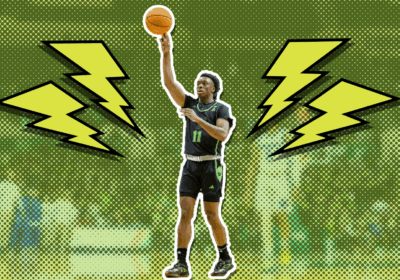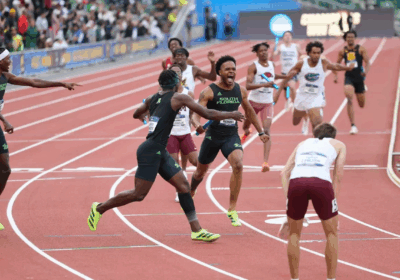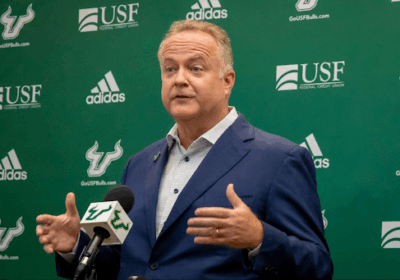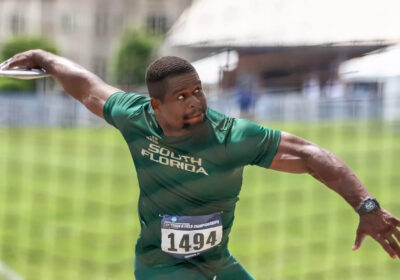OPINION: Bulls became warriors during injury-filled season

USF women's basketball battled through a lot during the 2018-19 season. The Bulls are better for it, though. SPECIAL TO THE ORACLE/GOUSFBULLS
Warriors.
No, not literal warriors, but basketball warriors who were battle tested and are the better for it going forward.
That’s how history should remember every single member of the 2018-19 USF women’s basketball team.
Better teams would have given up at so many different junctions in a season filled with adversity.
When discussing the adversity the Bulls faced this season, it might be difficult figuring out where to start.
Was it before the season, when Silvia Serrat, who missed all of the 2017-18 season due to injury, went down again?
Maybe it was when Vanessa Blagmon requested her release mere days before the season started — so close to the season that media guides with her picture had been printed and distributed.
Oh, who are we kidding? Any discussion of adversity starts Nov. 15, when arguably the best player in program history, Kitija Laksa, was sidelined for the remainder of the season with a torn ACL and meniscus.
In the first game after Laksa’s injury, fellow senior Laura Ferreira — who coach Jose Fernandez wanted an increase in offense from even before losing his top scorer — scored a career-high 34 points in a statement win against Oklahoma.
Laksa or not, the Bulls made it clear they weren’t going anywhere.
But it wasn’t just Laksa they lost.
Rising star Beatriz Jordao was sidelined for the rest of the season following the Dec. 30 game against LSU. The freshman was averaging 11 points per game, which was another blow to the Bulls’ offense.
Ferreira missed the rest of the season, too, due to a heart condition that sidelined her from Jan. 8 onward, not counting a brief appearance on senior night against UConn, which was more ceremonial than anything.
Couple the season-ending injuries and ailments with the normal bumps and bruises of basketball — Alyssa Rader and Sydni Harvey each missed time due to concussion symptoms and Elisa Pinzan missed about a month with an injury that was never disclosed — and USF was playing short-handed a lot.
When things were looking their bleakest, the remaining Bulls didn’t back down.
More games than not during AAC play, USF was suiting up eight or nine players. Even a basketball novice could tell you the remaining players had to play a lot more minutes than anyone could have imagined before the season.
Just by continuing to play, they were proving their toughness.
Then there were the individual players who made names for themselves this season.
Enna Pehadzic, who missed all but nine games the previous two season with injuries herself, became the leading scorer despite not starting the season on anyone’s radar.
Pehadzic went from playing five minutes against Ohio State in the season opener to playing the full 40 minutes five times, with numerous games coming just as close.
The 35-point game against ECU on Feb. 20 was Pehadzic’s finest hour, but it was also really just another night in her season-long growth. Pehadzic improved her perimeter game — finishing the season the team leader in 3-pointers, both made and attempted — something the team sorely needed after Laksa went down.
Pehadzic upped her game when her team needed her to most. She is a warrior.
But Pehadzic was far from the only warrior this season.
Luize Septe, who wasn't eligible until the LSU game, had to find her footing immediately.
Fernandez later said Septe, who came to USF from Latvia, didn’t even know where in the world she was for that first game in Baton Rouge, and perhaps more importantly, didn’t know any of the team’s plays.
She still played 20 minutes that night, scoring four points.
Septe, in a game Jan. 30 against Cincinnati, got socked in the nose toward the end of the first half. She went to the locker room, got bandaged up and returned in time to start the second half. She played 38 minutes that night, scoring what was then a career-high 10 points.
If Septe didn’t become a warrior after that, at least in a basketball sense, then nobody should be considered one.
Honestly, they’re all warriors. Even the ones that aren’t individually named here.
For a team that many thought could make a significant run in the NCAA Tournament to lose that much talent and make any postseason run is incredible.
The 2019 WNIT Second Round banner that will hang in the Yuengling Center this fall will mark Fernandez’s best coaching job in his nearly two decades at USF — there isn’t a doubt about that.
But he wouldn’t have been able to do it without his warriors.







